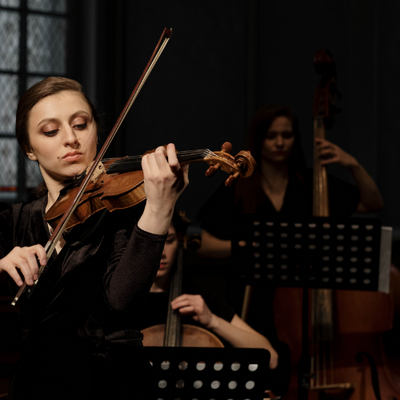Learning a string instrument is a journey marked by milestones, challenges, and the joy of personal growth. For many, the transition from beginner to advanced playing is both exciting and daunting. This guide outlines practical steps and considerations to help musicians navigate this pivotal phase, whether they're aspiring violinists, cellists, or players of other string instruments.
Recognising the Right Time to Transition

Progressing to an advanced level often begins with a clear recognition of readiness. Indicators may include mastering foundational techniques, such as correct bowing and fingering, developing consistent intonation, and feeling confident with intermediate repertoire. Another key sign is the ability to self-correct during practice, which reflects an understanding of technique and musicality beyond basic instruction.
For music students in schools or private lessons, guidance from a teacher is invaluable. They can assess your technical abilities and readiness to explore more complex compositions. Schools with established music programs often have tiered ensembles or orchestras, making it easier to identify when students are prepared for advanced participation.
Upgrading Your Instrument and Accessories
As playing skills improve, the quality of the instrument and its accessories can significantly impact progress. Beginner violins, violas, cellos, and double basses are designed to support basic learning but may lack the tonal depth and responsiveness required for advanced repertoire. Moving to a more sophisticated instrument allows for greater expressiveness and precision.
Choosing an advanced instrument requires careful consideration. Tone, build quality, and comfort in handling should all be evaluated. Accessories, such as bows, strings, and cases, also play an essential role in enhancing the playing experience. For instance, upgrading to higher-quality strings can improve tonal richness, while a well-balanced bow enables finer control.
When selecting new equipment, seeking professional advice is advisable. For schools making bulk purchases for their music departments, it’s particularly important to strike a balance between durability and performance to support the varying needs of their students.
Refining Practice Techniques

Transitioning to an advanced level requires a shift in practice methodology. Instead of focusing solely on repetition, advanced musicians should prioritise deliberate practice. This involves setting specific goals for each session, whether it’s perfecting a challenging passage or experimenting with dynamics to achieve a particular expression.
Scales and technical exercises remain crucial at every stage of learning. Advanced players often use these as a foundation to refine finger dexterity and bowing precision. Additionally, exploring études and specialised exercises designed for advanced string players can help address specific technical challenges.
Incorporating listening and self-reflection into practice is equally important. Recording practice sessions and critically evaluating performance can uncover areas for improvement that might not be immediately apparent during play.
Expanding Musical Repertoire
Advanced players have the opportunity to delve into a wider and more complex repertoire. Works by composers such as Bach, Beethoven, and Brahms often require technical mastery and emotional depth. Exploring pieces from various genres, including modern and contemporary music, can broaden a musician’s horizons and enhance adaptability.
For school orchestras or ensembles, challenging pieces offer students the chance to develop ensemble skills, such as blending, following a conductor, and maintaining tempo in synchrony with others. This stage also encourages a deeper appreciation for the collaborative aspects of music-making.
Seeking Advanced Instruction
As students progress, seeking advanced instruction becomes increasingly important. This might involve working with a specialised teacher, attending masterclasses, or participating in workshops. Teachers experienced in guiding advanced players can offer insights into nuanced techniques, such as vibrato, shifting, and advanced bowing styles.
For music students in schools, joining regional or national youth orchestras can provide exposure to high-calibre instruction and performance opportunities. Similarly, private students may benefit from participating in competitions or summer music camps to further hone their skills.
Embracing the Challenges of Advanced Playing

Transitioning from a beginner to an advanced player is not without its challenges. Advanced techniques demand greater physical coordination and mental focus. Pieces may take weeks or months to master, requiring patience and perseverance.
It’s essential to view these challenges as opportunities for growth rather than obstacles. Celebrating small victories, such as mastering a difficult passage or performing confidently in front of an audience, can keep motivation high.
A Lifelong Journey
Reaching an advanced level is a significant achievement, but it is far from the final destination. Music offers a lifelong journey of learning, exploration, and expression. Advanced players often find themselves inspired to continue evolving, whether by joining professional ensembles, teaching the next generation, or simply enjoying the personal fulfilment that playing brings.
For students, parents, and schools alike, the transition from beginner to advanced string instruments is a rewarding process that enriches both skill and character. With the right guidance, resources, and mindset, the journey can be as fulfilling as the destination. We understand that each musician’s path is unique, which is why we are committed to providing high-quality string instruments and carefully curated accessories tailored to meet the needs of players at every level.





















